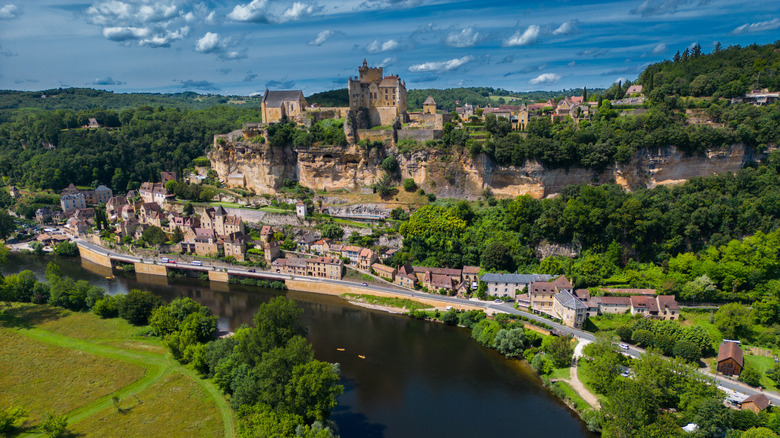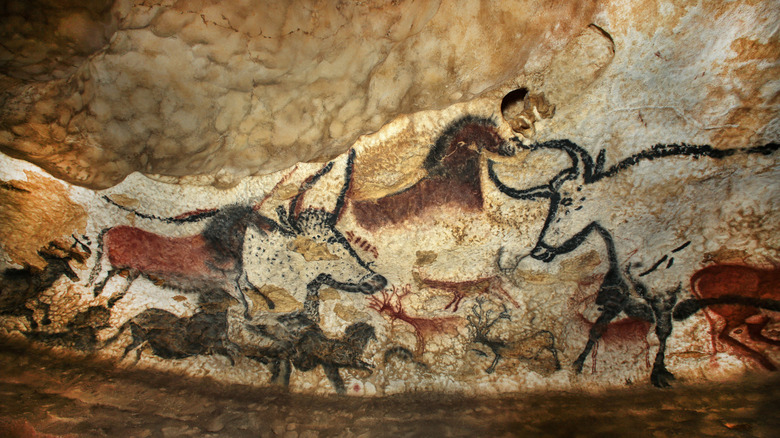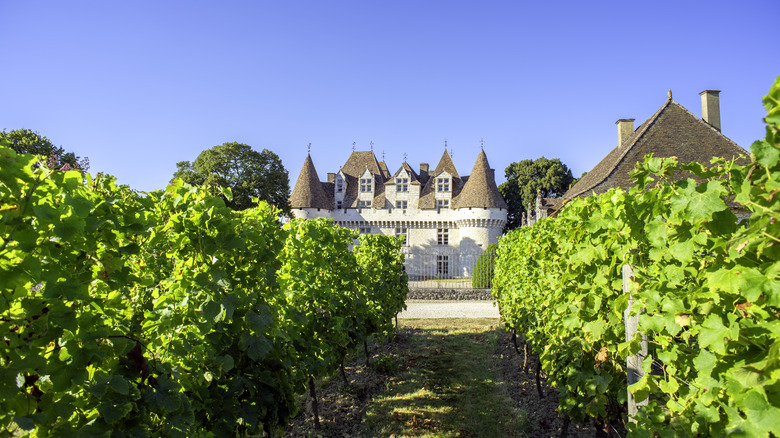France's Underrated Golden-Hued Region Is Where Castles, Cave Art, And Fine Food Blissfully Blend
The southwest of France often flies under the radar. Dominated by the vineyards of Bordeaux and the surfing beaches of the Charente-Maritime, the rest of the region is bizarrely overlooked, particularly by American tourists. The Brits have known about the delights of Nouvelle-Aquitaine and the ancient regions of Périgord and Quercy for decades, but this hasn't translated to a wider popularity.
The Dordogne is a particularly stunning example of a part of France that remains undiscovered by travelers from the other side of the Atlantic. This gorgeous, historic region is an exquisite combination of breathtaking natural beauty and quintessential French charm, with a stunning gastronomic offering and some of the most impressive examples of ancient cave art anywhere in Europe.
Part of the reason the Dordogne is not as popular with American visitors as other areas of France is that there are no direct flights to the main airports that serve the region. The main regional airport is Bergerac Dordogne Périgord, which offers routes to the U.K., Belgium, the Netherlands, Italy, and Montenegro. Bordeaux–Mérignac Airport is a much larger international hub about an hour and a half from the Dordogne's main town, Périgueux, but the only transatlantic routes it offers are distinctly Francophone, to Martinique in the Caribbean and Montreal in Canada. It is also infamous as an airport to avoid at all costs! As a result, while British holidaymakers have been the proud owners of second homes along the banks of the River Dordogne for many years, it has remained something of a secret amongst other travelers.
Imposing castles and neolithic art galleries
The British presence in the Dordogne does have a certain historical precedent. Aquitaine was ruled by the British throne as part of the Angevin Empire from 1154 to 1453, and many of the towns and cities in the region were built or fortified by the kings of England. It is perhaps therefore unsurprising that British tourists are drawn to the gorgeous, honey-colored towns and villages that line the Dordogne River and are scattered around the rolling countryside of the region.
With so many picturesque spots to choose from, it is hard to know exactly where to go. Monpazier is a great place to start, a breathtaking medieval gem founded in 1284 by Edward I of England. The town center has been painstakingly and carefully preserved, and it remains one of the most complete examples of medieval architecture in the region. Domme is another wonderful town, perched on a hillside with gorgeous panoramic views out over the Dordogne valley, ringed by imposing medieval fortifications. Finally, La Roque-Gageac is unmissable, right on the edge of the river, hiding under dramatic limestone cliffs, this photogenic little village is a true gem.
Alongside its marvellous medieval villages, the thing that draws tourists to the Dordogne is its remarkable collection of prehistoric cave paintings and its stunning chateaux. The castles of the Dordogne are somewhat more practical than the elegant turrets of the Loire, but spots like Beynac, Castelnaud, and Hautefort are perfect and eye-catching in their own way. Finally, the UNESCO World Heritage site of the Vézère Valley is a unique place to visit, boasting some of the most impressive and well-preserved examples of Cro-Magnon art and culture in the world. Lascaux and Rouffignac are the pick of the bunch and not to be missed.
Mouthwatering morsels and fine wines
France has one of the most celebrated and exceptional cuisines in the world, an era-spanning gastronomy that has defined much, if not most, of modern cooking. As a result, any vacation in France must include a significant amount of eating and drinking, and the Dordogne is no exception. The food culture here is a little more down-to-earth than in some other parts of the country, but no less delicious.
Starting off in the town of Bergerac, it is worth seeking out Le Saint Jacques, a fabulously traditional spot set over two floors with an open terrace for al fresco summer dining. Their reasonably priced three-course lunch menu is a treat, dripping in duck fat and garlic. Moving on, while it might not look like much from the outside, the tiny Le Tuquet restaurant in the unassuming village of Bouniagues is worth a drive, a wonderful place to dine like a local in France, where the portions are huge and the price is jaw-droppingly affordable.
Wine has been grown in the Dordogne for centuries, and while it might not have the name recognition of some of the vintages in neighboring Bordeaux, there are plenty of superb wineries that are worth trying. The most famous wines are those of Monbazillac, sweet wines that are perfect with cheese or dessert. The magnificent Château de Monbazillac is worth seeing, but its tasting sessions can be overcrowded, and trying out smaller domaines like Château de Bélingard or Maison Vari offers a far more interesting and intimate experience.


